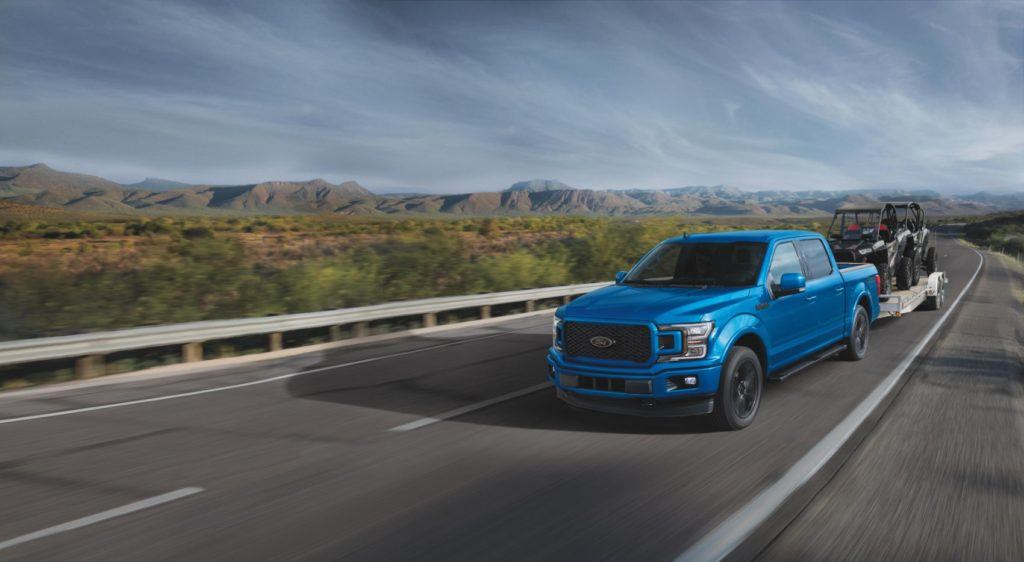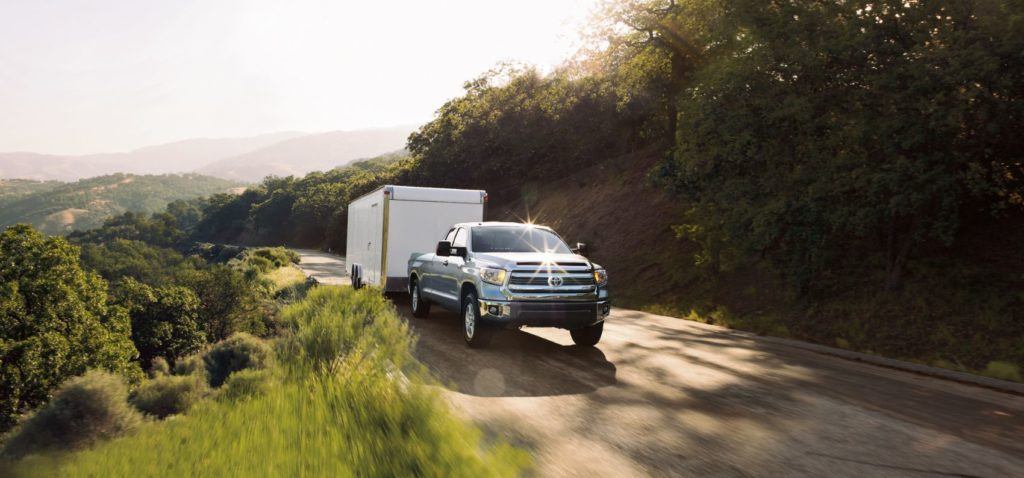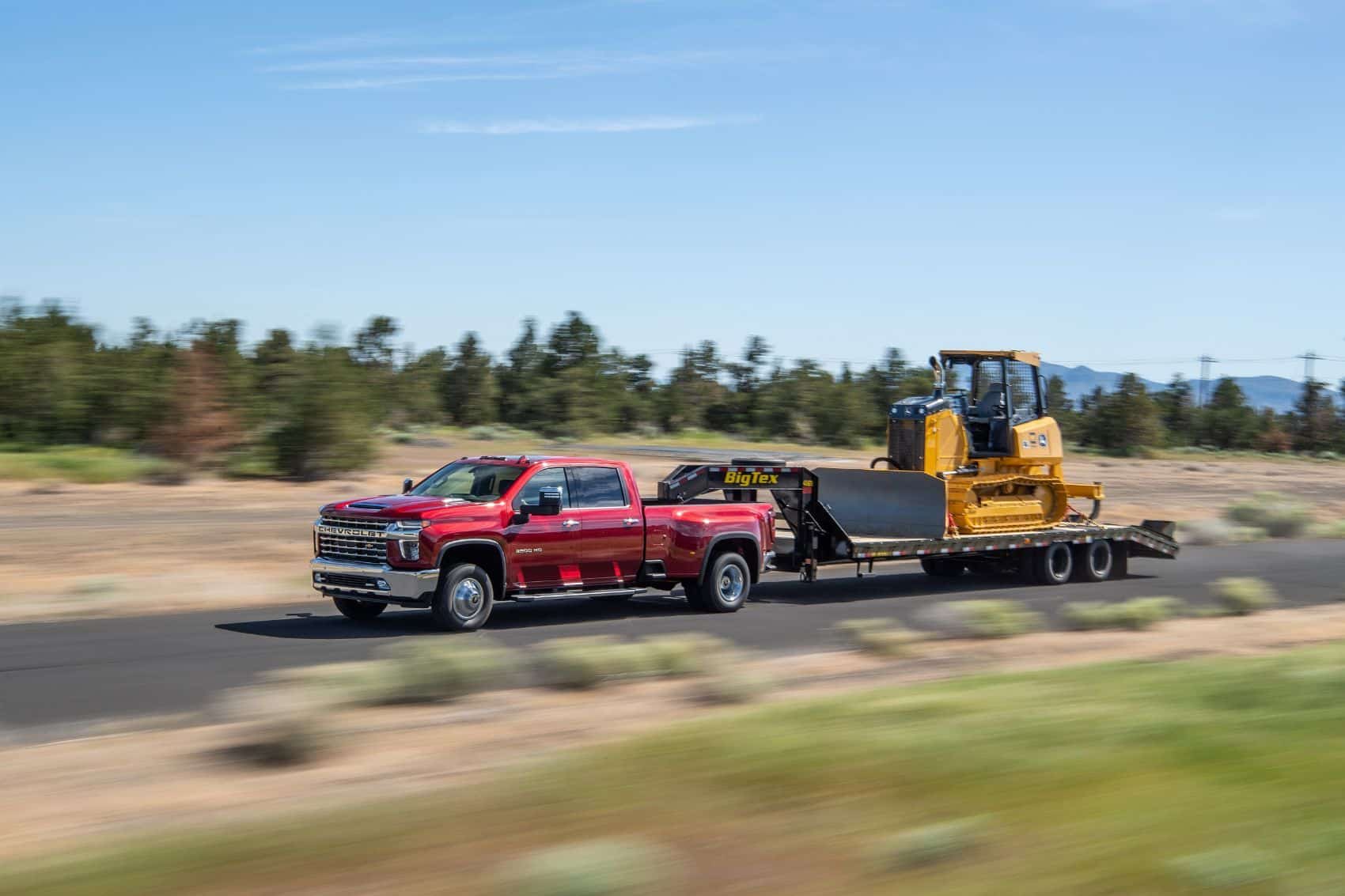- You can run some quick numbers to find your truck’s towing and payload capacity.
- Depending on how heavy your trailer is, you may want to consider a different hitch.
- Always exercise caution when towing and take max tow ratings with a grain of salt.
Your truck’s towing and payload capacity, while they may sound similar, do not refer to the same thing. If you use one rating when you need the other, you could end up carrying more than your truck is built for. Doing so can compromise your truck mechanically, as well as your family’s safety.
If you want to tow or carry a payload safely, you’ll need to know the difference between your towing and payload capacity. Neither are hard to calculate, but keep in mind these figures are maximum values, and you should avoid going over them. Below, we’ll cover the difference between payload and towing capacity, as well as how to calculate each.
Difference Between Towing & Payload Capacity
Payload is how much weight you can safely carry, in addition to how much the truck weighs while empty and fueled up. (This is also known as your truck’s curb weight). In so many words, the payload is anything stored in the truck, whether that’s in the cab or bed.
The towing capacity is how much you can tow behind your vehicle. This weight is typically a good bit higher than your truck’s payload because the weight of the trailer is pulling on the towing axle rather than bearing downward on either the front or back wheel axle.
Calculating Towing & Payload Capacity
To find the towing and payload capacity of your truck, you’ll need to know both its GVWR and GCVWR.
Gross vehicle weight rating (GVWR) is the maximum loaded weight of your truck. It includes both the payload capacity and your truck’s curb weight. To find your payload capacity, just subtract the curb weight from the GVWR. In most trucks, the GVWR will be included on the factory-build sticker inside the door jamb (usually on the driver’s side).
Gross combined vehicle weight rating (GCVWR) is the maximum loaded weight of your truck plus how much it can tow. To find your towing capacity, subtract the curb weight from the GCVWR.
You can also use the official payload and towing specs for your truck’s specific make, model, and configuration. However, the advertised payload and towing capacities are likely going to be higher than what your truck can practically handle. These capacities are not always practical because they’re based on tests that fail to consider the weight of the occupants and any additional cargo.

Towing & Payload: Important Considerations
Towing and payload ratings can be tricky to calculate accurately, just because of how many variables — like hitch type, environmental conditions, cargo arrangement, and more — are at play.
When using supplier-provided capacities, look for third-party verification of these numbers. Remember also to treat these values as maximums, not targets. Driving at or near your truck’s maximum capacity for any length of time will tax almost every part of your vehicle. The engine and transmission will run hotter, and your brakes and tires can start to wear prematurely.
You also want to consider your vehicle’s gross axle wheel rating (GAWR) when loading cargo into your cab or bed. This rating is how much weight can be placed over each axle of your truck. Exceeding this rating, even if you’re still below the payload capacity, isn’t a good idea. Higher front GAWRs are typically seen on trucks built for carrying heavy equipment – like snowplows – that sit on the front of the vehicle. By contrast, higher rear GAWRs mean a truck can carry more in its bed.

Using Hitches Effectively
While the two ratings are different, you shouldn’t treat towing and payload capacity as independent of each other. In general, the more weight you have in the bed, the less you’ll be able to tow effectively. This is because the payload capacity also includes the tongue weight, which is the weight that bears downward onto the hitch.
If you plan to pull a trailer close to your truck’s towing capacity, you may want to use a weight-distribution hitch. These hitches help shift some of the pressure on your back axle forward, distributing the weight of a heavy trailer more evenly across your truck’s axles.
Towing capacity can also be limited by the equipment you are using. If you’re towing a heavy load, make sure you’re not using a low-rated hitch or ball mount. Most hitches have their weight rating on a label that’s on the hitch itself. The label’s position will vary depending on what kind of hitch you’re using.

Towing & Hauling: Not About The Hype
While trucks are durable, they do have limits. Automakers put out bold claims about how much their trucks can tow and haul, but those trucks in the advertisements are a certain configuration. There is a good possibility the truck you own is not configured like the ones they are showing. Just because a truck claims to tow 30,000 lbs. doesn’t mean the version you have will do the same. In other words, always read the fine print and always consult your owner’s manual.
Once you have your truck’s capacities committed to memory, see our helpful towing guide. There we cover the importance of trailer brakes, 5th wheel versus gooseneck towing, and tips and advice for driving with a trailer.


